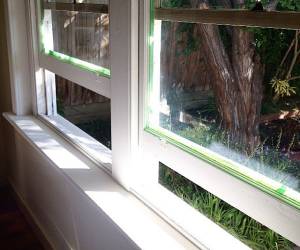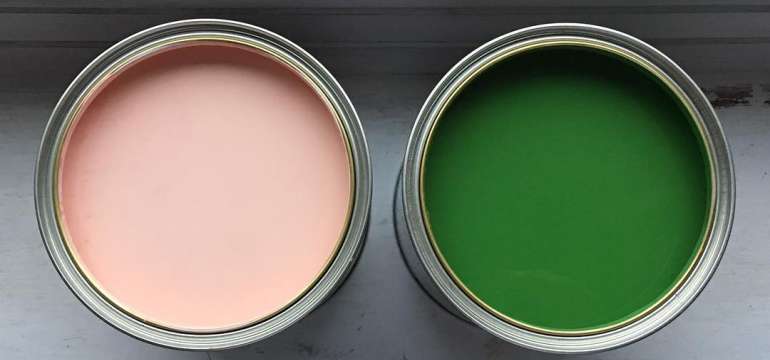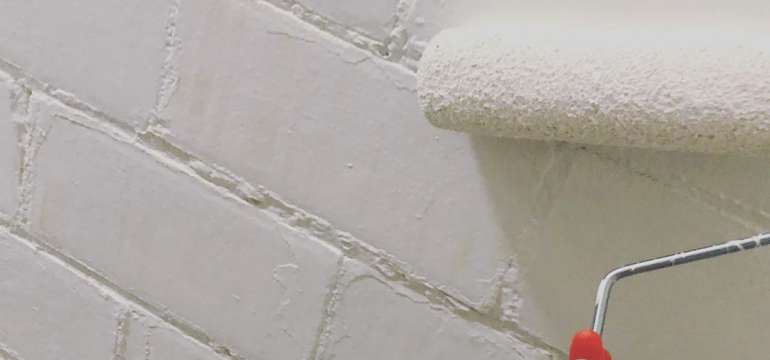Painting can be a fun project that completely transforms a room of your home or a piece of furniture. Many people love picking up a paintbrush and letting their creativity go to work. Unfortunately, they often have to worry about whether the materials they are using are safe. Oil-based paint fumes can sometimes cause irritation and may not be good for your health.
If you have wondered whether oil-based paint is toxic and what you can do to minimize its effects, here is a short guide on what you can do!
Is Oil-Based Paint Toxic?
Painting your latest project with oil-based paint can be a lot of fun, but you also need to make sure that you are taking the necessary safety precautions. Inhaling the fumes from oil-based paints can have some serious side effects on your short-term and long-term health. Understanding what can happen and how you can prevent some of these unpleasant side effects can help you to live a little healthier.
First and foremost, it is important to understand that oil-based paints are not toxic. When used as directed, they do not actually poison the body. People or children who ingest the paint may have some serious stomach upset, but that is generally all they will experience. If they cough and the paint makes its way into the lungs, there may be more serious repercussions like difficulty breathing or a case of pneumonia.
Oil-based paints do contain high levels of volatile organic compounds, often abbreviated as VOCs. These chemical compounds do evaporate as the paint dries, but they can cause some uncomfortable symptoms during the process of painting. Symptoms of exposure to VOCs can include headache, dizziness or light-headedness, nausea, and difficulty breathing.
The most common symptom of being exposed to oil-based paint is just mildly annoying. You might experience irritation to the eyes, nose, or throat.
 These symptoms often disappear once you can get some fresh air, and the off-gassing is finished. However, continuous high exposure to VOCs can cause long-term damage to your nervous system, liver, and kidneys. If you work with a lot of oil-based paint, you may want to consider investing in a respirator to help protect you from these fumes.
These symptoms often disappear once you can get some fresh air, and the off-gassing is finished. However, continuous high exposure to VOCs can cause long-term damage to your nervous system, liver, and kidneys. If you work with a lot of oil-based paint, you may want to consider investing in a respirator to help protect you from these fumes.
How Long Do Oil-Based Paint Fumes Last?

Now that you know the side effects that you can expect from your latest project, it is important to know how long you need to allow your project to rest before bringing it inside. Allowing the project inside while it is still off-gassing can be bad for your health. This prolonged exposure to the VOCs can cause serious irritation to the eyes, nose, and throat, as well as being bad for your long-term health.
Fortunately, you won’t have to wait too long for the paint to dry and the oil-based paint fumes to dissipate. Most of the time, it will take about two to three days for the fumes to go away and for the paint to fully dry and cure.
During this time, it is best for you to avoid being in the area as much as possible. This might be easy if you painted a dining room table in your garage, but it can be more challenging if you painted a room in your house. If this is the case, you need to know a few tips for how to get rid of oil-based paint fumes.
How to Get Rid of Oil-Based Paint Fumes?

If you absolutely cannot avoid the area that you just painted, there are a few things you can do to minimize the impact of the VOCs and the oil-based paint fumes. These are relatively simple things that can make a big difference.
First, you can make sure that you have plenty of ventilation in the room. Start running fans as soon as you pick up that paintbrush. This will help to circulate fresh and clean air into the space while pushing contaminated air elsewhere.
Baking soda is another miracle worker when it comes to absorbing odors. It is an inexpensive way to combat those strong smells. In several small bowls, place a generous amount of baking soda. Distribute the bowls around the room and allow them to rest overnight. In the morning, you can empty them and refill the bowls if you still have any lingering paint odors. Alternatively, you can sprinkle baking soda all over the carpet and vacuum it up in the morning.
Simple water and lemon might also do the trick. Fill several bowls with water and place a lemon slice in each. Distribute them around the room, and they will eventually absorb the odor of the paint.
There is simply no way around the fact that oil-based paint comes with some strong fumes that can be hazardous to your health. Try some of these simple solutions to help you eliminate the odor and regain control of your home today!
- Is a Hot Water Heater In the Attic a Good or Bad Idea? - July 18, 2021
- Lawn Mower Starts Then Dies – Here’s the Fix! - June 21, 2021
- Can You Mix Pine-Sol and Bleach? - September 9, 2020


T.M.Lindes
Wednesday 1st of March 2023
Misled by a Benjamin Moore employee, we used Benjamin Moore ADVANCE waterborne alkyd paint to paint a small room. 4 months later, we cannot enter the room without masks on. For 4 months, throughout the entire winter, we have kept the windows open during the day, closed at night - we are unsure how long this nightmare will last.
J.A.M
Wednesday 7th of June 2023
@T.M.Lindes, I had the same problem with Benjamin Moore ADVANCE and I am very sorry you are going through this. If it is any help, I wanted to let you know that one way to get rid of the problem is to strip the paint. You could get a heat gun to do this within a day or you could hire a professional to sand it off. I too was misled by a Benjamin Moore employee who claimed the paint was zero VOC and virtually odorless... Anyway, I wish you the best of luck and hope you get rid of the smell soon.